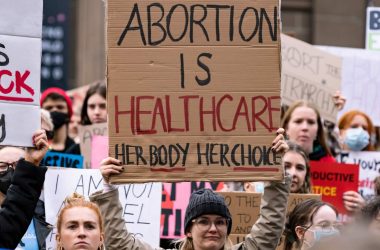Citing latest Census count of 48 million uninsured, researcher says Affordable Care Act will cut that figure by only half, leaving tens of millions vulnerable to unnecessary suffering and premature death
CHICAGO—(ENEWSPF)—September 17, 2013. The Census Bureau’s official estimate that 48 million Americans lacked health insurance in 2012 means approximately 48,000 people died needlessly last year because they couldn’t get access to timely and appropriate care, a prominent health researcher, Dr. David Himmelstein, said today.
And contrary to many people’s expectations, the number of unprotected Americans will drop by only half when Obamacare is fully implemented – even if all the as yet undecided states were to opt-in to the law’s Medicaid expansion, he said.
The estimate of 48,000 deaths in 2012 is based on a peer-reviewed study by Himmelstein and other Harvard researchers published in the American Journal of Public Health in 2009, widely cited during the health reform debate, which found that for every 1 million persons who were uninsured there were about 1,000 related, preventable deaths.
Himmelstein is professor of public health at the City University of New York, visiting professor of medicine at Harvard Medical School, and a primary care doctor. He said, “The Census Bureau’s latest figure, 48 million uninsured, conjures up a very grim picture: a preventable death every 11 minutes.”
He said studies have shown that uninsured people with chronic illnesses like heart disease delay or forgo care, often leading to serious complications of their medical condition and, in many cases, premature death.
In another study recently published at the Health Affairs blog, Himmelstein and his colleagues found that the Affordable Care Act “will minimally alter the demographic composition of the uninsured, regardless of whether undecided states opt-in or out. While Blacks and Hispanics will continue to be overrepresented among the uninsured, the majority will be non-Hispanic, white, low-income, working-age adults, many of them employed.”
The researchers continue: “The majority … of the uninsured will be U.S. citizens, irrespective of states’ acceptance of Medicaid expansion. More than 4.3 million children and nearly 1 million veterans will remain uninsured under either scenario. … If all currently undecided states opt-in, 29.8 million people will remain uninsured [in 2016], whereas if all opt-out, the number of uninsured will total 31.0 million, 1.2 million above the opt-in scenario.”
Today’s Census Bureau report said in 2012 the percentage of people without health insurance had slightly decreased to 15.4 percent of the population from 15.7 percent in 2011, but that the number of uninsured people in 2012 was not statistically different from 2011, at 48.0 million. The bureau’s figures show the modest gains in coverage were chiefly attributable to an increase in the number of persons covered by Medicare.
While the percentage of persons covered by employment-based insurance, 54.9 percent, was not statistically different than the previous year’s figure, about a half-million fewer workers were covered by such plans in 2012.
The bureau reported that Texas had the highest percentage of uninsured, at 24.6 percent, followed by Nevada, New Mexico, and Florida, each of which exceeded 20 percent. In total numbers, California and Texas had the largest number of uninsured, each exceeding 6.4 million people.
Responding to today’s Census Bureau report, Himmelstein said: “As a physician, I simply cannot accept a situation where tens of thousands of people die every year because they lack insurance coverage. And lest anyone think this problem will be solved by Obamacare, our research and the government’s own Congressional Budget Office projections show that about 30 million people will still be uninsured in 2023. That figure translates into roughly 30,000 excess deaths annually – again, an intolerable prospect.”
Himmelstein said the nation should adopt a “zero-tolerance policy” toward lack of health coverage, and that the Census Bureau report “underscores the urgency of going beyond the Affordable Care Act and swiftly moving to a single-payer, improved-Medicare-for-all program.”
“Such a program would assure truly universal, comprehensive, high-quality coverage for everyone while simultaneously ridding us of the scourge of insurance-company-related waste, bureaucracy and profiteering,” he said. “It would thereby save both lives and money.”
Himmelstein is co-founder of Physicians for a National Health Program, an organization of 18,000 doctors who advocate for single-payer national health insurance. PNHP played no role in funding any of the research work cited above.
Four-year historical state-by-state data on the uninsured, from 2012-2009, compiled by PNHP staff from the annual findings published each fall by the Census Bureau, can be found here.
Physicians for a National Health Program (www.pnhp.org) is an educational and research organization of more than 18,000 doctors who support single-payer national health insurance.
Source: pnhp.org
Related Article:
U.S. Census Announces Income, Poverty and Health Insurance Coverage in the United States for 2012








